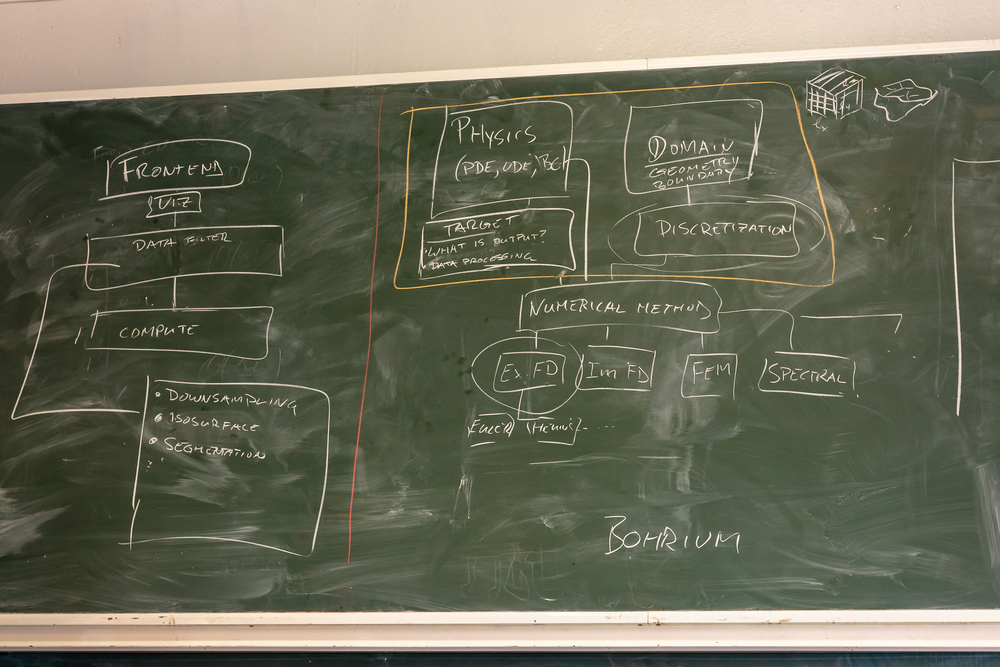Concept
At the Bornö 2015 CFD workshop, the eScience group with Brian Vinter presented a concept for a ocean/climate modelling domain-specific language.

Input
With an ocean model DSL, writing and developing an ocean model requires only these steps:
- Define a system of equations for the ocean model (shallow water, ..., primitive equations, ...?) in some high-level conceptual language (to start with, we will use Python instead)
- Specify a domain in terms of geometry and boundaries (global/regional ocean or idealized basins with/without topography)
- Specify a discretization (unstructured grids, regular grids, ...)
- Specify the target: What should be included in the output? Data postprocessing (online/offline)?
Automatized model generation
The system will then automatically
- Select the optimal numerical method to solve the equations (although user input can be respected, too)
- Generate code for fast execution, using the Bohrium backend, on any infrastructure.